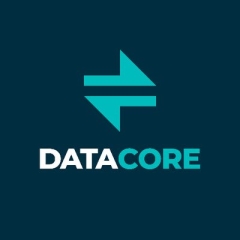What is our primary use case?
The primary use case is the provisioning of high-performance and redundant storage for our VMware platform. With the help of auto-tiering, the data lands on the optimal storage tier for it. Furthermore, integration into the backup system is very important to us. We use Veeam B&R, which, with SANsymphony integration, is able to work much more efficiently via storage snapshots.
We use SANsymphony within a data center distributed over two locations. This was very easy to implement. This also includes settings that optimize the data traffic between the locations.
How has it helped my organization?
With SANsymphony, we were able to set up fully redundant storage across two locations. We use SANsymphony as the main storage for our cloud and dedicated customer environments.
We were impressed by the integration into virtualization and the backup system. SANsymphony integrates seamlessly into our VMware platforms. Auto-tiering enables us to keep the storage content on the optimal storage tier easily.
Synchronous mirroring ensures very high availability for us and our customers. In the event of maintenance or failure, an automatic failover takes place. The automatic failback is the cherry on top of the cake.
Integration with Veeam Backup & Replication has enabled us to improve our backup infrastructure significantly.
The use of storage snapshots and backup via Fibre Channel reduces the load on the productive infrastructure.
What is most valuable?
It is the sum of the many, often outstanding, individual functions that help us to ensure economical and safe operation for us and our customers. The most important functions for us are
The synchronous mirror allows us to operate a fully redundant storage solution that is distributed across two sites. It can even cover the failure of an entire site. This also benefits us during complex maintenance work, as no downtime is required.
Auto-tiering enables us to store the data on the storage tier that is optimal for it. This also works within a vDisk, so old or cold data ends up on cheaper data carriers than the new or hot data accessed more frequently.
SANsymphony is being continuously developed. This makes it easier for us to respond to new challenges.
What needs improvement?
I see potential here in the support of NVMeoF, both as a target and in the backend. In addition, there should be new ways to improve the redundancy of the pools created with it - e.g. through extended RAID functionality (RAID5 or RAID6) or erasure coding.
Management could be improved. The management console sometimes reacts very slowly.
In the area of the HCI solution, I could imagine a different mode of operation. For example, a group of servers form a pool in which the data can be stored.
Protection could also be guaranteed here via replication and erasure coding.
For how long have I used the solution?
We have been using Datacore SANsymphony since 2007.
What do I think about the stability of the solution?
The systems are very stable. No great administrative effort is required to keep the system in good condition. Provided it is well-sized, it optimizes itself.
What do I think about the scalability of the solution?
SANsymphony is very adaptable. Increasing the storage capacity and/or improving performance through faster systems in the backend are no problem.
How are customer service and support?
Datacore support is one of the best in the industry. They offer a fast response and competent answers or even remote sessions. Support is always available 24/7/365.
How would you rate customer service and support?
Which solution did I use previously and why did I switch?
We used StoreAge SVM with Dothill storage systems.
SANsymphony has more and better functions. The TCO is also better.
How was the initial setup?
The setup is quite simple if you are familiar with the storage environment. Certification as a DCIE is required. This ensures that you are sufficiently familiar with the system to install and administer it.
What about the implementation team?
We did implement it in-house.
What was our ROI?
I can't give an exact ROI. The stability, availability, and performance pay for themselves immediately.
What's my experience with pricing, setup cost, and licensing?
Good sizing is the basis for a stable and high-performance environment. It is important to plan in sufficient reserves.
It can make sense to license a higher number of TB if this puts you in a better price category.
Which other solutions did I evaluate?
We did not evaluate other options.
What other advice do I have?
SANsymphony is best in class. It's flexible, like a Swiss army knife.
Which deployment model are you using for this solution?
On-premises
Disclosure: My company has a business relationship with this vendor other than being a customer: We use SANsymphony as block storage for our own cloud. We also offer consulting, implementation and operation of SANsymphony environments. We are a partner of DataCore.









